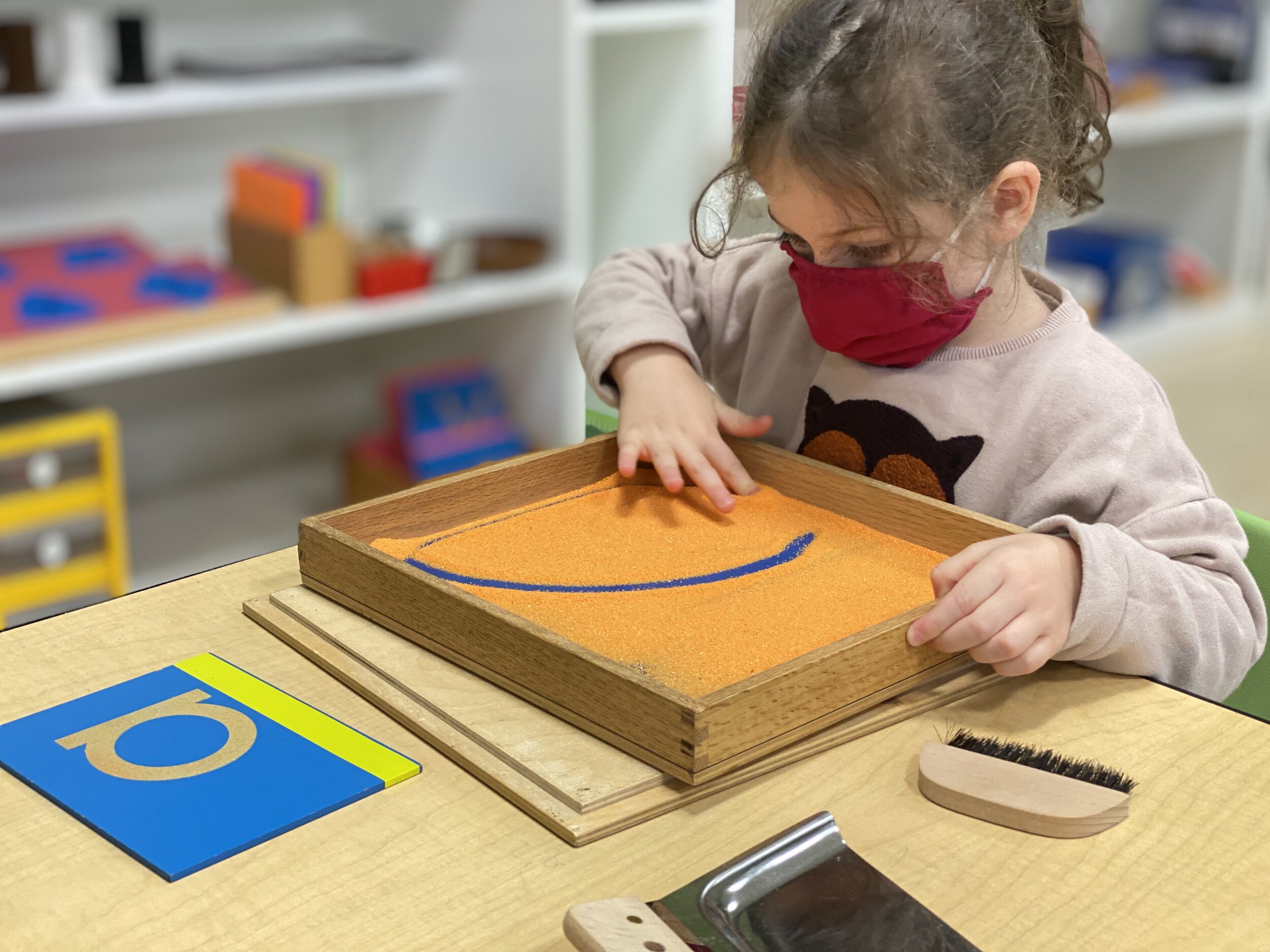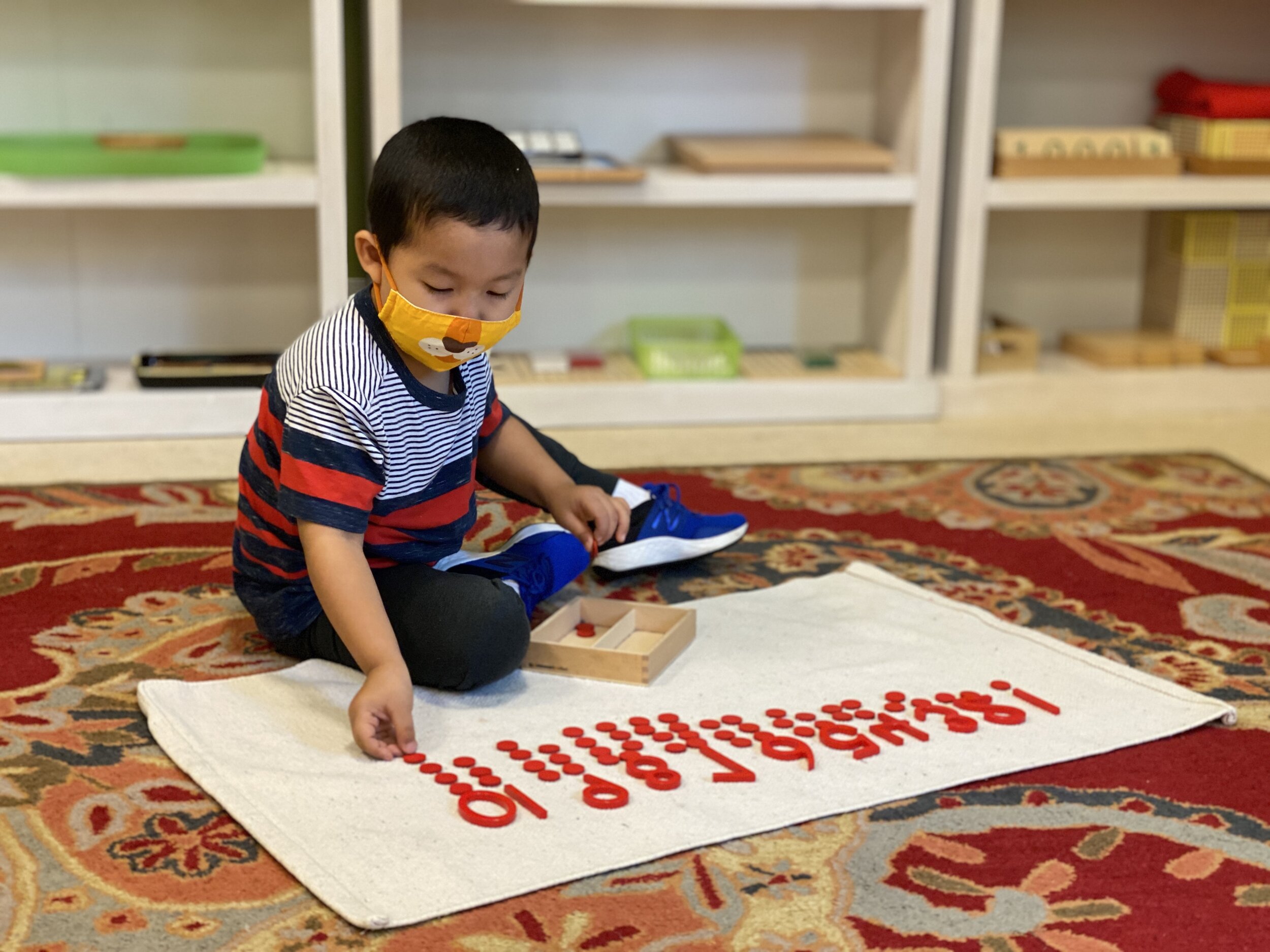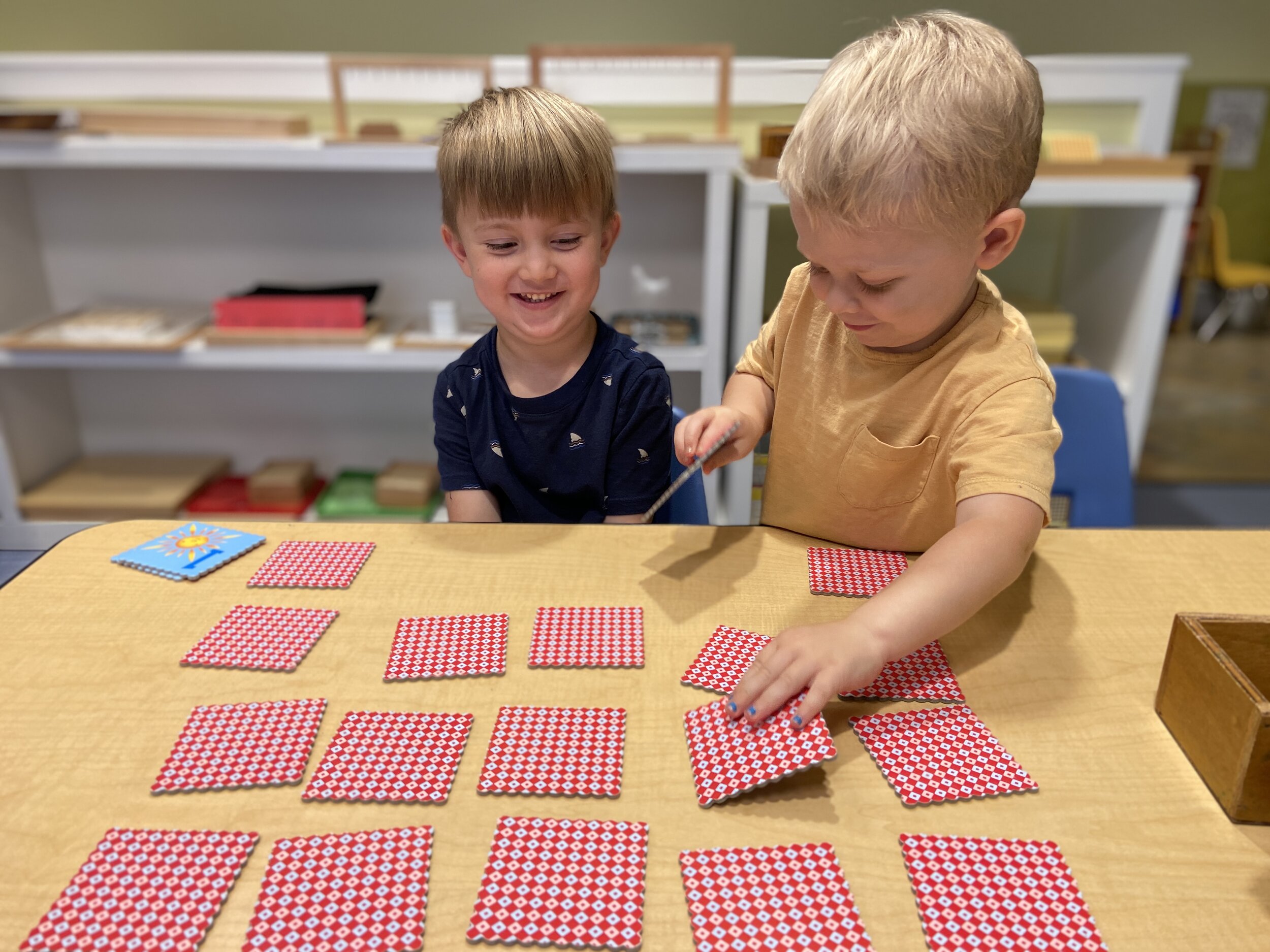Teacher/Child Ratio:
Each class has a lead teacher and two teaching assistants. We ensure a low ratio of students to teachers.
Orientation:
To ease possible anxieties, we employ a transition schedule to ease the child into the classroom. On the first visit, the child and parent(s) will join their class for one hour together, this is only a visit. On the first real attendance day, the child stays with the class for half a day, the parent is encouraged to stay with the child for 30 minutes. On the second day, the child is encouraged to stay the whole day, with the parent staying for 20 minutes and/or picking up a bit early if needed. On the third and following days, the child is encouraged to stay in the classroom for the whole day and parents should practice the standard drop off and pick up procedures. If at any time during the first week the child or parent needs to adjust this procedure, communicate with the lead teacher and/or director to facilitate.
Curriculum:
Montessori believes that each child has a great curiosity and interest in learning about the world around them. Given a self-guided method of study and a beautiful, focused, and engaging environment, a child will naturally impel themselves in their studies. Each child has the full ability to learn independently and thrives with a teacher to get past any questions or misunderstandings. Through discovering in this environment, a child will learn at a deeper level than any teacher-driven curriculum. The Montessori curriculum is broken down into five basic areas. They are described below:
+ Practical Life
+ Sensorial
+ language
+ mathematics
+ Cultural Objects
Practical Life
These daily exercises help develop a child’s mental, physical, and moral development. Practical life works include dusting, dishwashing, weaving, table setting, polishing, dressing, carrying, pouring, etc. These activities help a child gain independence through practicing simple and clear exercises to gain confidence.
Sensorial
Sensorial works are at the heart of the Montessori curriculum. They provide the building base through teaching a child through their senses. Sensorial works help a child isolate particular qualities in the materials such as size, sound, color, smell, and shape. These works indirectly develop language skills, muscle coordination, a mathematical mind, and control of movement. Once a child has mastered these concrete works, he can move on to abstract concepts at his own pace.
Language
Various developmental stages work on various components of language in the Montessori program. Language studies in pre-readers would include a development of vocabulary, recognition of letters, sequencing, and expression of thoughts. Pre-writers would learn letter sounds, mystery words, blends and digraphs, vowel patterns, letter tracing, and practice the form for holding a pencil. A child at the writing level would practice tracing letters, and practice penmanship and would continue reading studies to increase vocabulary and thinking skills.
Mathematics
We believe each child has a naturally mathematical mind. Through the development of a child’s senses and working with concrete materials, they can comprehend the abstract subjects within mathematics. Children learn about numbers, quantities, addition, subtraction, multiplication, exchanging and fractions.
Cultural Subjects
Dr. Montessori believed in educating the whole child, thus there are a wide variety of materials and activities available to children including art, music, zoology, botany, geography, and history.





